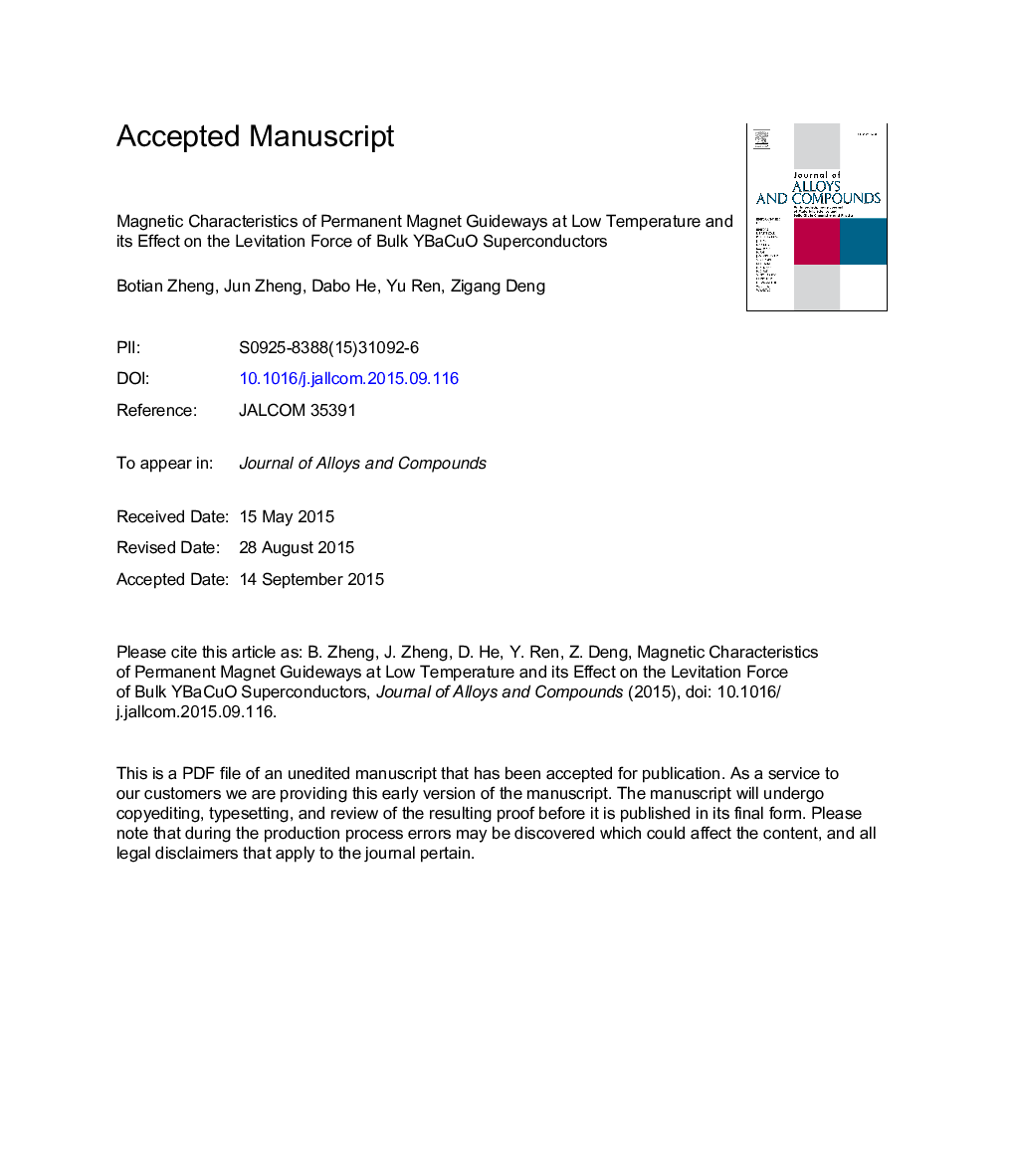| Article ID | Journal | Published Year | Pages | File Type |
|---|---|---|---|---|
| 1607638 | Journal of Alloys and Compounds | 2016 | 12 Pages |
Abstract
It is important to understand the influence of environmental temperature variation on high temperature superconducting (HTS) maglev performance in practice. As the on-board bulk high temperature superconductors (HTSCs) are kept in liquid nitrogen cryostats at all times, the actual temperature effects relevant to maglev performance are on the permanent magnet guideway (PMG), and these have been examined by exploring the PMG magnetic characteristics and the related interaction force with the on-board bulk HTSCs above it in this paper. The experimental temperature range was set from room temperature to 77Â K. The experimental results show that the typical room temperature (RT) vertical magnetic flux density (defined as BPMG), 565Â mT, of the PMG segment first increases as the temperature decreases to 138Â K, before it reaches a peak of 634Â mT within the temperature range from 138Â K to 120Â K, with a rapid growth rate to 12.2% over the RT value. And then BPMG decreases quickly to a stable value of 576Â mT at 77Â K. A final 1.9% enhancement ratio was obtained compared with the initial BPMG at room temperature. Furthermore, the levitation force exhibits a similar trend to the BPMG whatever the field cooling process and the zero field cooling process was conducted when the PMG temperature is reduced. Growth of 21.8% and 13.4% for the levitation force occurs for the field-cooling process and the zero-field-cooling process, respectively. The results provide basic data for environmental temperature effects on HTS maglev systems, which implies that the low temperature environment can have benefits towards enhancement of their levitation performance.
Related Topics
Physical Sciences and Engineering
Materials Science
Metals and Alloys
Authors
Botian Zheng, Jun Zheng, Dabo He, Yu Ren, Zigang Deng,
